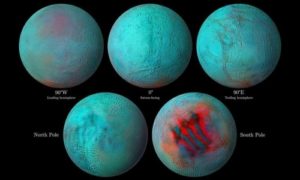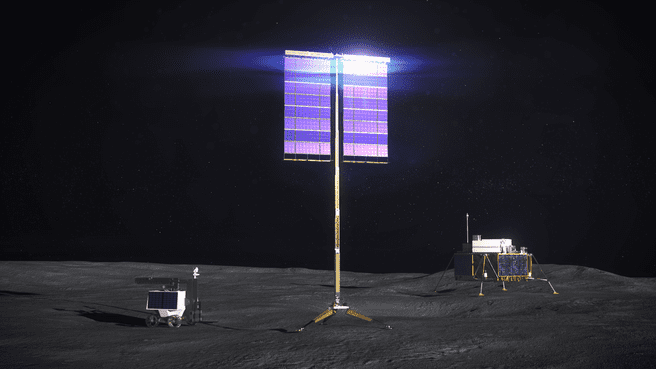Analysis of geological phenomena that are less pronounced but the same than the Antarctic’Tiger Stripe’
 (The red part represents the newly formed ice. The red area on the bottom right is the tiger stripes around Antarctica. [Provided by NASA/JPL-Caltech/University of Arizona/LPG/CNRS/University of Nantes/Space Science Institute/Resale and DB prohibited])
(The red part represents the newly formed ice. The red area on the bottom right is the tiger stripes around Antarctica. [Provided by NASA/JPL-Caltech/University of Arizona/LPG/CNRS/University of Nantes/Space Science Institute/Resale and DB prohibited])
Saturn’s moon (moon) Enceladus, along with Jupiter’s Europa, is considered one of the most probable places for life in the solar system.
Linear parallel structures around Antarctica, known as’tiger stripes’, are analyzed to be formed by rising seawater through the gaps between the ice layers covering the satellites. The presence of the sea, even though it is under the ice layer, means that the conditions for living things around the hot water gushing out like on Earth may have been established.
Until now, such traces of the sea have been confined to the Antarctic region, but in the northern hemisphere, the seawater under the ice layer has been found to form new ice on the surface, and it has been reported to academia.
According to the National Aeronautical and Space Administration (NASA) Jet Propulsion Research Institute (JPL), the team of planetary and geomechanical scientists Gabriel Toby at the University of Nantes in France used the data on the Vims and Infrared Mapping Spectroscopy (VIMS) mounted on the Saturn orbiter Cassini. It was found through the obtained infrared composite image, published in the scientific journal Icarus.
Cassini has orbited Saturn for 13 years, collecting data on light reflected from Saturn, its rings, Enceladus, and other 10 satellites through VIMS. This light contains not only visible light that can be seen with the naked eye, but also infrared light, so if you separate it by wavelength, you can get information on what the material reflecting the light is composed of.
The team created a new spectral map of Enceladus by mixing VIMS data with images of Cassini’s digital camera equipment, ISS, confirming that the infrared signal on the map had a clear correlation with the geological activity that covered the Antarctica with new ice. did.
Scientists had already discovered that the sea beneath the ice layer here, the year after Cassini entered Saturn’s orbit, the sea, exhaling grains of ice and water vapor, forming massive columns.
The team went one step further and captured some infrared features identified around Antarctica in the northern hemisphere as well.
This was interpreted to indicate that the northern hemisphere is also covered with newly formed ice, as well as similar geological activities in both the southern and northern hemispheres.
The research team estimated that the new ice covering the northern hemisphere was formed when ice from the sea was gradually pushed up to the surface through ice grain eruptions or gaps between ice.
“Infrared rays have shown that the ice surface around Antarctica has been formed just a short time ago, but since we already knew that ice matter was erupting there, nothing was surprising.” The area is also young, and it can be said that it could have been active some time ago in terms of geological time.”
The Cassini, operated by JPL, ran out of fuel while orbiting Saturn and oxidized when it entered Saturn’s orbit in September 2017. This was to protect the creatures that might be in the sea of Enceladus.











